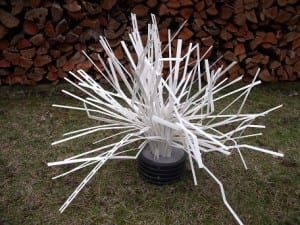In his mind, Doino fast-forwards to December, when this oval impression in the ground will become an important watery alcove where young coho salmon will take refuge.
“It will be amazing to stand here when the creek flows this way and see that happen,” says Doino, a habitat biologist with the Oregon Department of Fish and Wildlife.
Contractors are in the midst of a massive reconstruction of the lower reaches of this main Upper Rogue River tributary. They plan to return it to its original meandering path through the state-run wildlife area.
When it’s completed early next month, it will eliminate the straight, freeway-like artificial channel created in the 1950s that allowed water to move through lower Butte Creek and into the Rogue River quickly, without letting it filter into the creek’s lowlands. The Associated Press
The newly reconstituted channel will be more like its original self, with water filtering into side-channels and newly constructed alcoves. Young coho and steelhead will be able to ride the ebbs and flows into these unique habitats critical for their protection from rushing flows.
“That’s what they need and they just don’t have it throughout the Rogue River basin,” says Brian Barr, a biologist with the Ashland-based Geos Institute and a partner in the $700,000 rechanneling project.
“They need that off-channel habitat,” Barr says. “It’s a rare opportunity to be able to do a project like this.”

